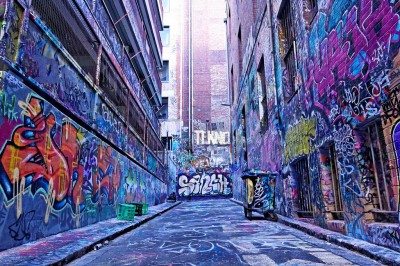
Ask someone where they’re from and the answer is revealing. We rarely say the country or state, almost always we start with the city. We certainly define ourselves by the city we call home or the city with which we have the closest connection.
Another test. Ask yourself are you proud of your city’s cultural life and the plentiful activities on offer. Then work out the number of those activities in which you have actually participated. We are proud of aspects of our place that we don’t really have much, if anything, to do with.
One more. Ask yourself, if your city was a person, what kind of person would it be? Well dressed, bright, stately? Or a man of the people, strong, and hardworking? We judge a city by its people and its people are often judged by its leaders. I always remember the arguments over the Lord Mayor and his car. One camp said it was wrong to have splendour attached to political office; the other camp saw it as a ritual reflecting the city’s status and heritage. This is actually an argument about values not a car. And communities have diverse values, despite many a politician’s best attempts to pin a shortlist to us.
Australia’s tourism marketing efforts consistently struggle to break free of the Hoges Curse. How can Brand Australia be a lovable laconic larrikin and an urbane sophisticate? There aint’ no crocodiles in Melbourne, of that we’re sure. It’s too damn cold.
The image (brand) of a city can be defined as: “A sum of beliefs, ideas, impressions that a people have of a place.”
How we perceive a place (city, nation, state) is defined by our reactions to its perceived strengths in the following place branding areas:
- Presence – brand awareness
- People – how the people who inhabit the city are perceived; the quality of leadership
- Potential – the perceived future potential of a city
- Prerequisites – the basic expectations such as education, accommodation etc.
- Vibe – the energy as expressed through cultural vibrancy, activities etc.
- Place – the physical, manmade and natural assets
While governments cannot actively manipulate the perceptions of millions of people in other regions, cities and countries, there are some important things they can do about their reputation:
- Understand and monitor the city/region’s image, in the places and sectors where it matters most, and understand exactly how and where this affects their interests.
- Collaborate imaginatively, effectively and genuinely with business and civil society, to create a coordinated strategy and narrative – the ‘story’ of who the region/city is, where it is going and how it is going to get there – which honestly reflects the skills, the ideas/innovation and the volition of the people.
- Maintains a stream of innovative and desirable products, services, policies and initiatives in key sectors, which demonstrates the substance behind the narrative and proves the city’s right to the reputation its people and government desire to acquire.
Ellis Jones was engaged by Latrobe City Council to test brand perceptions and engage the community in uncovering and understanding what the Latrobe Valley region has to offer. That is, the substance already existing in its communities and assets.
This is important. Place branding needs 1) strategy, 2) substance and 3) symbolic actions. You cannot choose to brand a place as an industrial hub if there are only green fields. And you cannot call a place with green fields the best place for cows unless you can demonstrate it with a paddock full of heifers, or a transformational investment.
The brand study is happening at a pivotal time for Latrobe as the federal and state governments discuss the transition to a low carbon future and what that might mean for the valley’s coal and power generation industries. Fortunately there is a lot more to Latrobe than brown coal. There are also inspiring examples of other cities emerging from similar situations, most notably Pittsburg (US), Manchester (UK) and Australia’s own Newcastle.
The Latrobe Story campaign launched yesterday. It includes a microsite, Facebook quiz, online survey and social networks. Get ready to participate.

